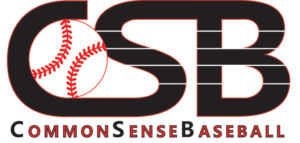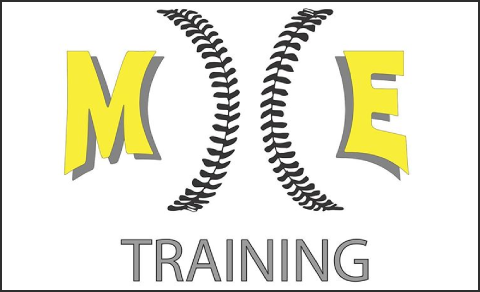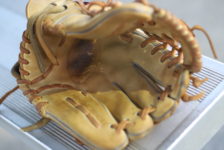I had the pleasure of playing for Jim Leyland for three years. Sitting next to him was like going to Harvard for 12 years and studying baseball.
I learned a lot from him and he taught me if you don’t hold guys on properly you will run yourself right out of the game. It is very important for pitchers to keep the running game in check and there’s several ways to do it. I will break it down for lefties and righties.

Lefties:
- You have a huge advantage. As we saw from Jon Lester, you don’t even have to throw the ball over in order to prevent runners from stealing. Leyland told me the most important thing is being able to vary how long you hold onto the ball prior to your delivery. Base runners love seeing a pattern with how many looks you give and how many seconds you are in your set position prior to pitching. By making them wait, they begin to get uncomfortable and it upsets their timing. Once they second-guess themselves, they are much less likely to steal.
- The most effective pickoff for a lefty is the quick step-off and snap throw to first. This takes some time to master, because it is not a position you are used to throwing from. Young pitchers are more likely to throw this ball away. The reason it is more effective is because how quickly you can get rid of the ball and the base runner has to react so quickly just to make it back safely.
- The more traditional pickoff attempt to first can also be effective. You don’t want to get predictable and always look home when you are going to throw over. Sometimes you can look directly at the runner because he will think that’s when you are going to deliver it home. Once he gets uncomfortable, he will take a lesser lead. The rules state that a pitcher cannot cross the imaginary 45 degree line between the mound and home plate and throw to first base, but a crafty pitcher will often push this boundary just enough to get away with it and fool the runner. Pitchers like Andy Pettitte made a living off this and picked off many runners who weren’t even trying to steal second.
- It’s also a good idea to hold off from showing your best pickoff move right away. You can give the base runner a false sense of security by showing your ‘B’ move, or a mediocre one early in the game before showing your best.
- Utilizing the slide step is another great weapon. I don’t recommend young pitchers doing this, because of two reasons. First, it puts more strain on your arm because you are not using your larger muscle groups to deliver the pitch. Second, it is hard enough for a young pitcher to master a normal delivery and now they are being asked to learn something very different.
- Pitch outs are also very effective. Leyland used to be able to tell if a base runner was stealing because they would often give it away by flinching or twitching their fingers when they are taking a lead. Once he saw that, he would call for a pitch out. I work on this with my older pitchers because it is a big part of the game, and it can also be difficult to hit a spot outside of the strike zone that you are accustomed to throwing to. It’s important that you deliver a pitch with intensity and not simply lobbing it. That defeats the purpose of the pitchout. It is meant to give the catcher the best opportunity to throw out the runner.

Righties:
- There are more challenges for a right-handed pitchers to control the running game because you are not facing the runner and they will be looking for your first move. At the amateur level, though, with only two umpires, it is possible you can get away with the balk move by slightly flinching your front leg before stepping back and throwing to first. Base runners are looking for that front leg to move when they are attempting to steal, so if you can do it almost simultaneously with the back leg then you can catch them napping.
- Like lefties, varying the amount of time you hold the ball before delivering the pitch is effective in making the base runner uncomfortable. Using a head fake can throw them off, and it is not a balk.
- Also like lefties, you can show your ‘B’ move first, maybe a slow step back without a full-effort throw can give them that false sense of security before using your quickest move.
- By spinning–and not stepping back–you will have the best chance to catch a runner back at first..
- Even if you do not succeed in picking the runner off first, you can still curtail the running game by making the runner decrease his lead by half-a-step. This can be the difference between him being out and safe at second.
- The pitch out is very effective in base running counts. Make sure you are firing a firm pitch outside of the strike zone and not too low where the catcher needs to waste any movement.
- The slide step is often used by righties. I prefer a modified slide step. This way you can cut off a split second from your standard delivery while not losing much velocity. This is a ‘knee-to-knee’ leg kick that will still allow you to throw strikes and not lose your release point.

Second base:
- The key here is varying your looks. Sometimes you can look once at the runner before delivering. Sometimes you can look twice, or even three times–but never more than three times. Remember, the priority is still delivering a quality pitch and not being overly concerned with the runner.
- Using the ‘inside move’ is very effective on a 3-2 count with runners on first and second. Most runners, especially at the lower-levels are simply looking for that leg to go lift before taking off for third base. You can get yourself out of a jam if you mix in this move and the runner was not careful enough.
- The ‘daylight play’ is more advance and is critical at the collegiate level. This is a planned play where the pitcher will wait for the shortstop to break behind the runner before he spins around and fires the ball to the base where the shortstop will hopefully be able to apply the tag before the runner gets back.
- The ‘timing play’ is another called play where the pitcher will stare at the catcher until he drops his glove. This is the signal to spin and fire to the second base bag where the second baseman or shortstop will be there to hopefully apply the tag before the runner gets back.
If you can use these tactics, you will be a more complete pitcher. Not allowing base runners to take extra leads or steal bases at will could really help you win a ballgame, especially one that is going to be decided by one run.












